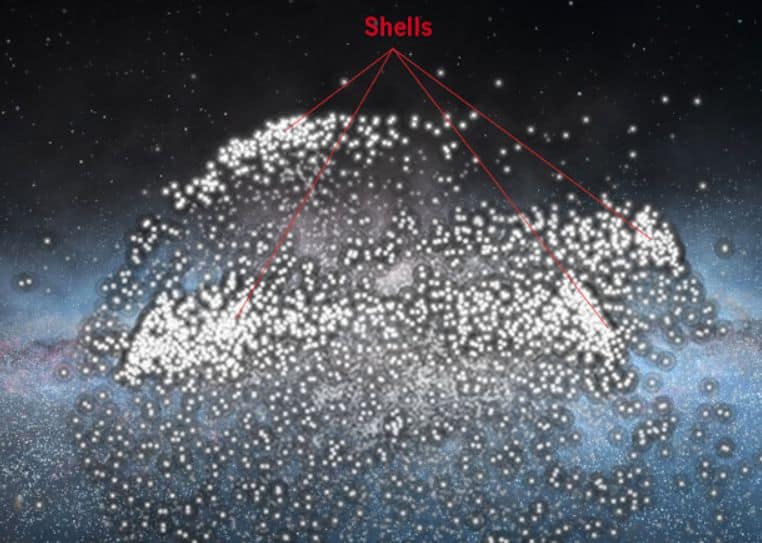A team of scientists found that about three billion years ago, the Milky Way collided with a dwarf galaxy that passed through its center, according to the Astrophysical Journal. Proof of this is the unusual umbrella-shaped structures in the stellar stream in the constellation Virgo.
In 2005, astronomers discovered a stellar stream in the constellation Virgo, a constellation of stars that orbits the center of the galaxy. Star streams are thought to be dwarf galaxies or globular clusters that have been extended along their orbit by tidal forces of another, larger galaxy up to the point of total destruction.
Usually, stars in such associations move at similar speeds and in the same direction. However, the analysis of the motion of stars in the Virgo stream showed that while one part of the objects is flying towards the Earth, the other, on the contrary, is moving away. For a long time, astronomers could not explain this behavior of the luminaries, but now they have managed to find its cause.
Astrophysicist Heidi Jo Newberg from the University of Pennsylvania and his colleagues analyzed data from the Sloan Digital Sky Survey, Gaia and LAMOST, and found two T-shaped structures in the Virgo stellar stream. Past observations of other galaxies have shown that such structures can arise after collisions with other smaller galaxies.
Each time a dwarf galaxy passes through the center of the Milky Way, it gradually slows down under the influence of its gravity. Ultimately, the stars “break away” from it, which form long filaments. Survey data simulations can be used to determine how many flybys through the center a dwarf galaxy has survived. It can also help determine when the initial collision occurred.
N-body simulations showed that the dwarf galaxy passed through the center of the Milky Way about 2.7 ± 0.2 billion years ago. In addition to the umbrella-shaped structures, it could also give rise to a spiral-like structure in the galactic disk, as well as a burst of star formation in its inner part.
The discovery also helps clarify another issue. Until now, scientists thought that the birth of T-shaped structures in the Virgo stream and the absorption of the “sausage” galaxy by the Milky Way occurred at about the same time. However, it turned out that these events took place with a difference of 5-8 billion years, which suggests that either they are not related, or the age of the “sausage” galaxy was determined incorrectly.
The age of the “sausage” galaxy, also known as “Gaia Enceladus”, was determined by the Gaia survey. In the past, he also managed to draw up a detailed map of the Milky Way, which contains more than a billion stars.
